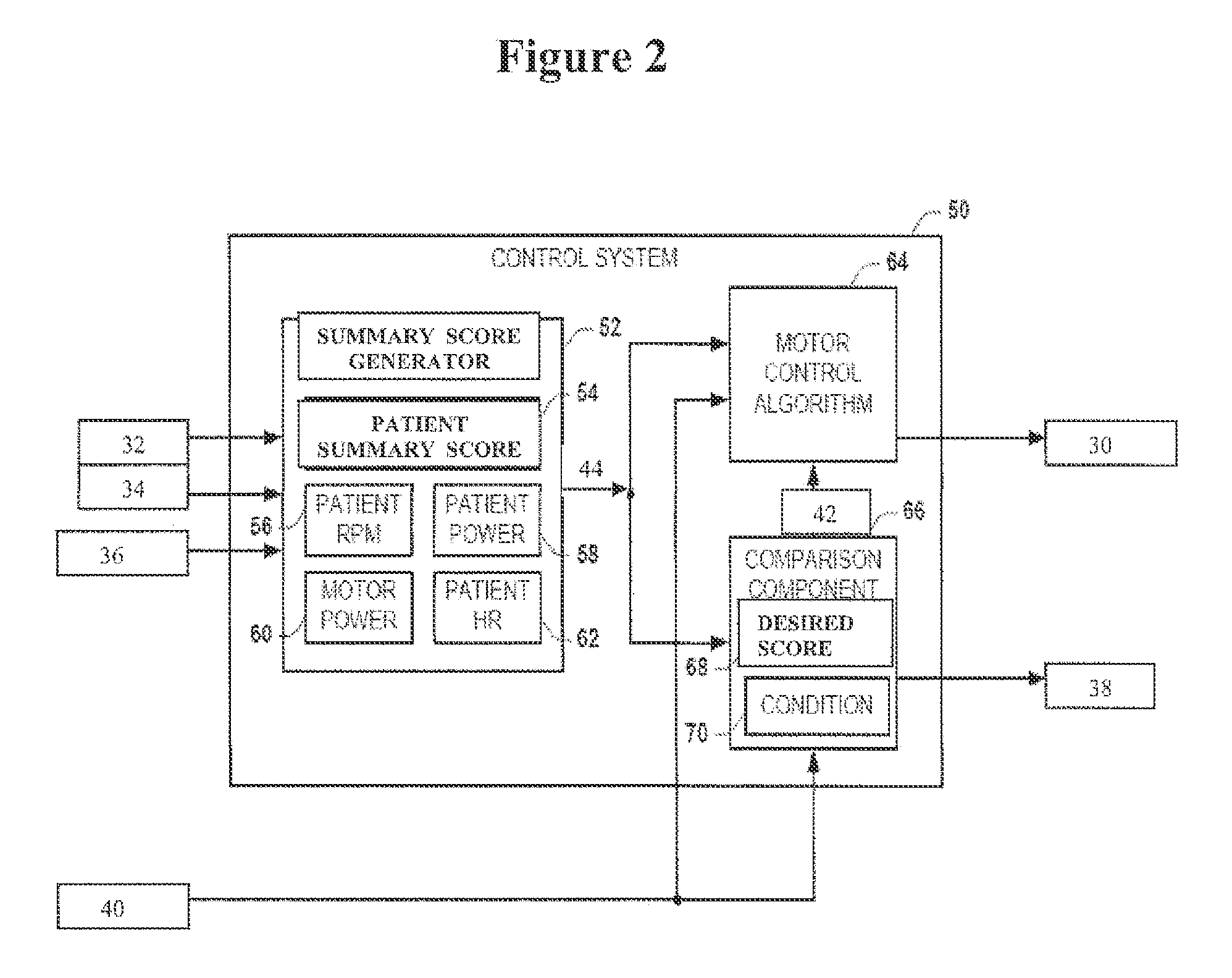Systems and methods for improving motor function with assisted exercise
a technology of assisted exercise and motor function, applied in the field of medical treatment, can solve the problems of disabling dyskinesia, and affecting the quality of life of patients, and achieve the effects of improving motor function, reducing the difficulty of patients exercising, and limiting the ability of patients to exercis
- Summary
- Abstract
- Description
- Claims
- Application Information
AI Technical Summary
Benefits of technology
Problems solved by technology
Method used
Image
Examples
example 1
[0072]Ten patients with idiopathic PD (8 men and 2 women; age 61.2.+−.6.0 years, Table 1) were randomly assigned to complete an 8-week forced exercise (FE) or voluntary exercise (VE) intervention. Following the 8-week intervention, patients were instructed to resume their pre-enrollment activity levels; follow-up patient interviews indicated compliance with this request. Patients in the FE group exercised with a trainer on a stationary tandem bicycle (FIG. 4a), whereas the VE group exercised on a stationary single bicycle (Schoberer Rad Me.beta.technik (SRM)). The work performed by the patient and the trainer on the tandem bicycle was measured independently with 2 commercially available power meters (SRM PowerMeter; Julich, Germany).
[0073]TABLE-US-00002 TABLE 1 Group Demographics.sup.a Forced (n=5) Voluntary (n=5) P.sup.b Age (y) 58.+−.2.1 64.+−.7.1.08 Duration of PD (y) 7.9.+−.7.0 4.4.+−.4.0 0.36 UPDRS motor III score Baseline 48.41.+−.12.7 49.0.+−.15.4.95 Cadence (rpm) 85.8.+−.0.8...
example 2
[0091]The effects of acute forced-exercise on brain activation pattern were studied in six mild to moderate PD patients, using a MRI protocol including whole brain MPGR anatomic images, diffusion tensor imaging and functional MRI (fMRI). For all scan sessions, patients were “off” anti-parkinsonian medication. Patients were scanned on two occasions: no-exercise and post forced-exercise. The order of these scan sessions was randomized across the six patients and scan sessions were separated by 5-7 days. On both days, patients reported to the laboratory at approximately 9:00 AM and completed UPDRS and biomechanical testing and completed familiarization trials for the motor task to be performed within the scanner. On the forced-exercise day, patients performed 40 minutes of forced-exercise (same paradigm as Example 1) and were assessed clinically with the UPDRS, blinded evaluations. Following completion of these activities patients rested and were provided a light snack. At approximatel...
example 3
[0098]The average fMRI data from ten patients in three different groups (off medications, on medications, and off medications but undergoing forced exercise) under circumstances similar to those described in Example 2 is shown in FIG. 9. This fMRI data indicates activation of the supplemental motor areas of the cortex (the top images) and the basal ganglia (the bottom images) after forced exercise.
PUM
 Login to View More
Login to View More Abstract
Description
Claims
Application Information
 Login to View More
Login to View More - R&D
- Intellectual Property
- Life Sciences
- Materials
- Tech Scout
- Unparalleled Data Quality
- Higher Quality Content
- 60% Fewer Hallucinations
Browse by: Latest US Patents, China's latest patents, Technical Efficacy Thesaurus, Application Domain, Technology Topic, Popular Technical Reports.
© 2025 PatSnap. All rights reserved.Legal|Privacy policy|Modern Slavery Act Transparency Statement|Sitemap|About US| Contact US: help@patsnap.com



